Welcome to IBonomics! We are excited to launch and hope you find the website useful! Learn more about us here!
Welcome to IBonomics! We are excited to launch and hope you find the website useful! Learn more about us here!
A diagram showing the effects of a price ceiling set below the market equilibrium price, resulting in excess demand and welfare loss.
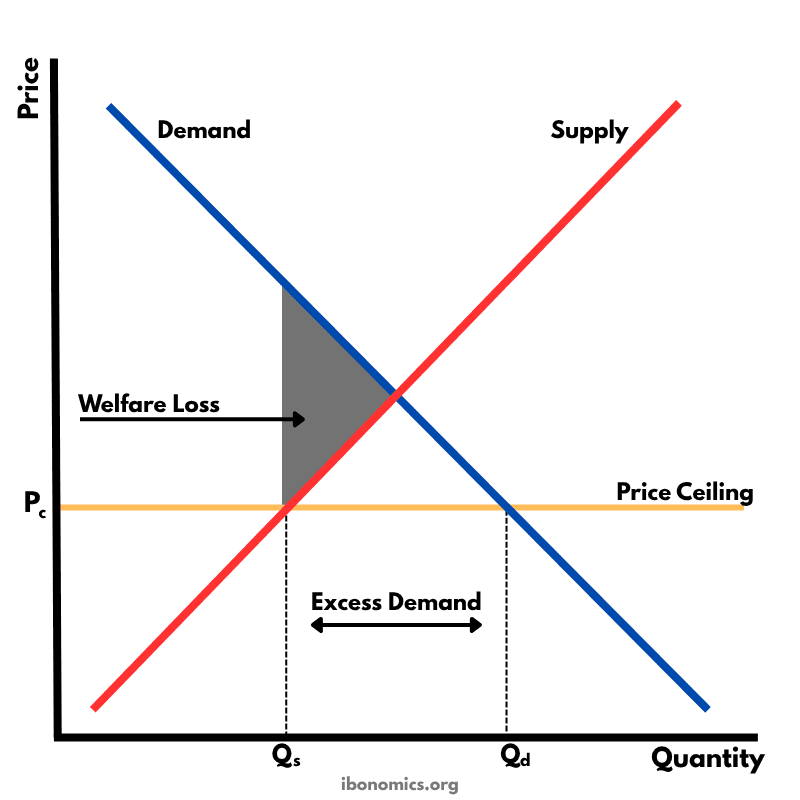
Demand Curve: Slopes downward, showing an inverse relationship between price and quantity demanded.
Supply Curve: Slopes upward, showing a direct relationship between price and quantity supplied.
Price Ceiling (Pc): A legal maximum price set below equilibrium to protect consumers, but distorts the market.
Excess Demand: The shortage created when Qd > Qs at the price ceiling level.
Welfare Loss: The lost economic surplus due to inefficient outcomes caused by underproduction and unmet demand.
A price ceiling is a maximum legal price set by the government, typically below the market equilibrium price.
At the ceiling price (Pc), quantity demanded (Qd) exceeds quantity supplied (Qs), leading to excess demand (shortage).
Consumers want to buy more at the lower price, but producers are less willing to supply, creating market disequilibrium.
The shaded area shows welfare loss — the loss of total economic surplus due to underproduction and misallocation of resources.
Price ceilings are often used to make essential goods affordable, such as rent controls or food price caps, but can lead to rationing, black markets, and reduced quality.
Explore other diagrams from the same unit to deepen your understanding
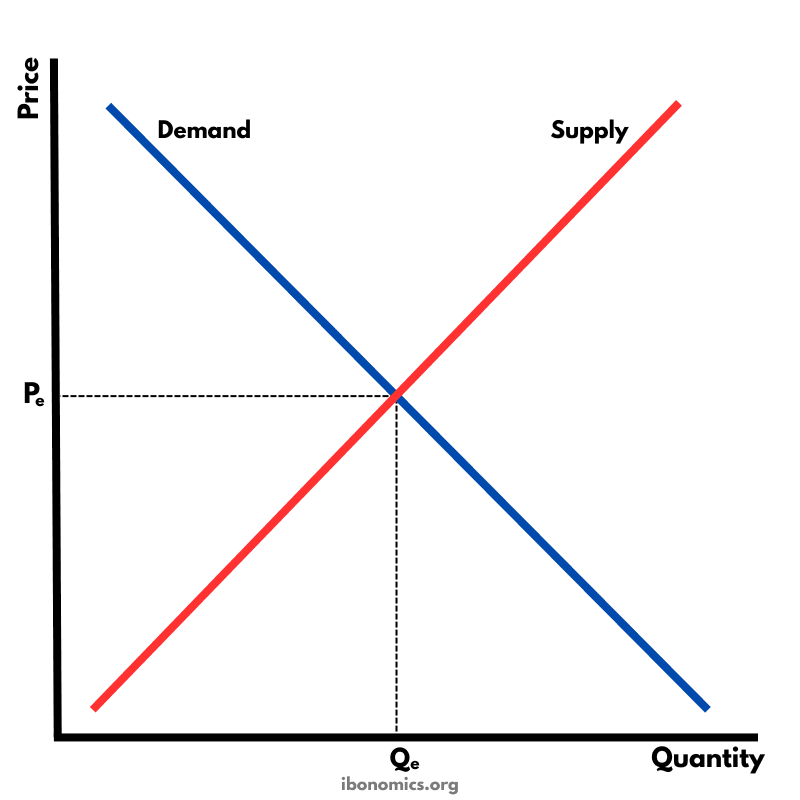
The fundamental diagram showing the relationship between demand and supply in a competitive market, determining equilibrium price and quantity.
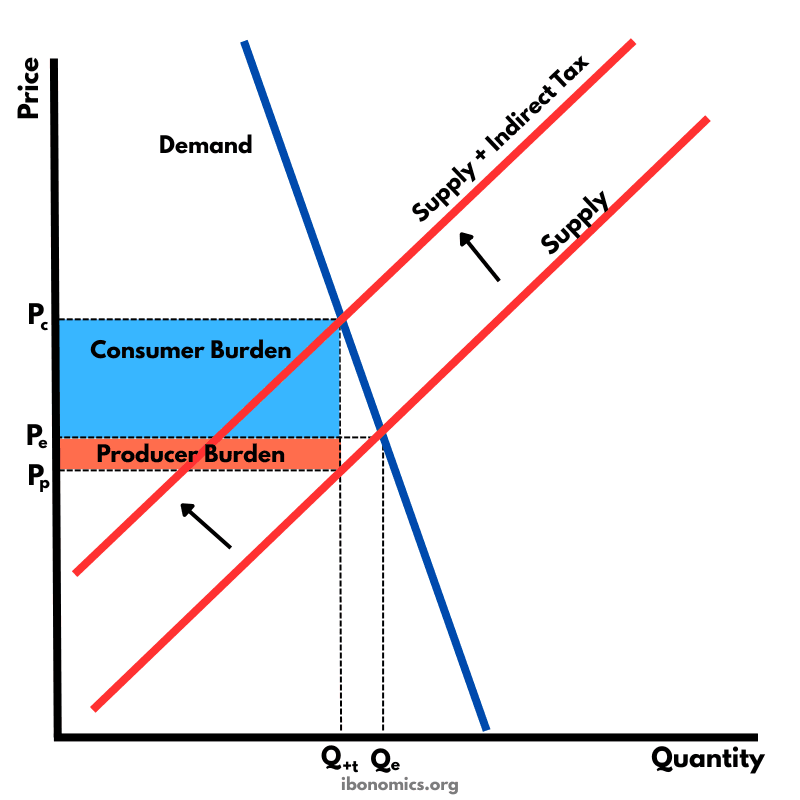
A supply and demand diagram showing the effect of an indirect tax on a good with inelastic demand. The consumer bears a larger share of the tax burden.
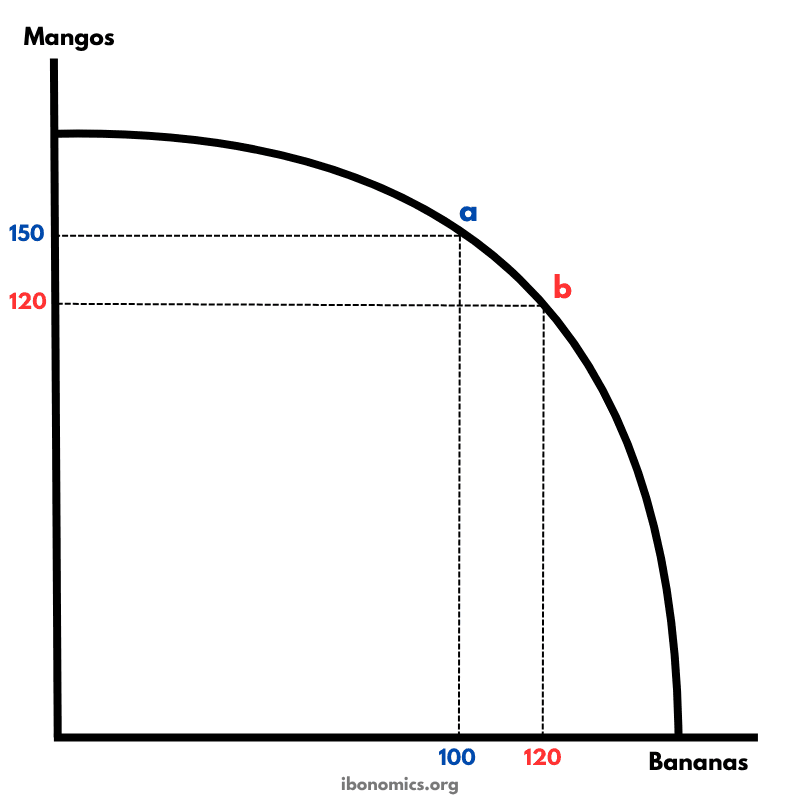
A production possibility curve illustrating the concept of opportunity cost and the trade-offs between producing two goods: mangos and bananas.
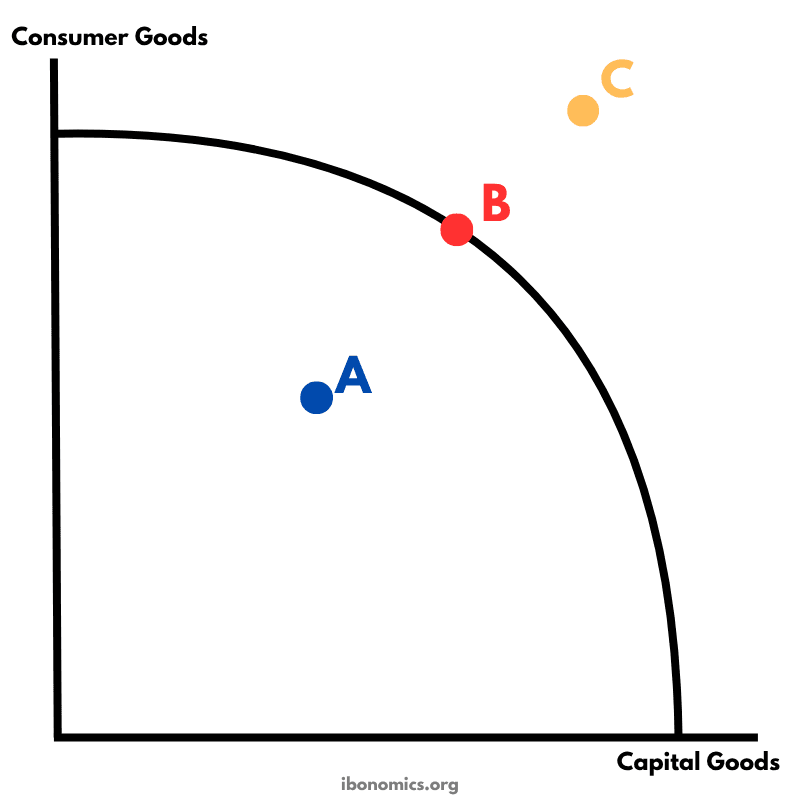
A PPC diagram showing different levels of production efficiency and economic feasibility using combinations of consumer and capital goods.

A model illustrating how money, goods, services, and resources flow between households, firms, the government, the financial sector, and the foreign sector in an economy.
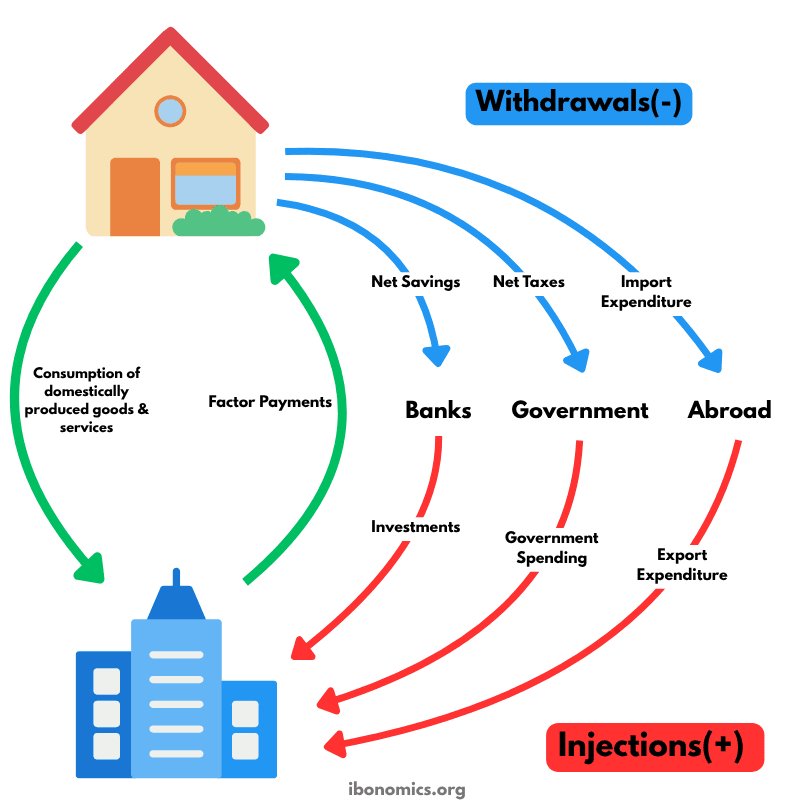
A refined circular flow model highlighting the roles of injections and withdrawals in determining national income and economic equilibrium.